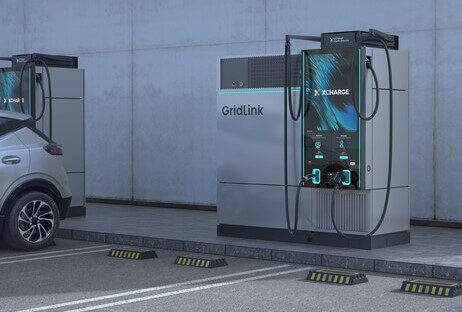XCharge North America, a provider of DC fast-charging and battery-integrated electric vehicle solutions, has introduced GridLink, a charging station designed to address the needs of the North American energy grid. This development combines rapid charging capabilities with grid support functions.
GridLink is equipped with a 55-inch LCD screen with touch control for user interface and advertising capabilities. It can deliver up to 300 kW of power, allowing EVs to charge in approximately 15 minutes. By integrating a high-capacity battery system with bidirectional technology, GridLink enhances energy management by balancing energy supply and demand, contributing to reduced costs and increased efficiency.
This station features an in-house-developed energy storage system that uses lithium iron phosphate (LFP) batteries. XCharge North America designed the LFP batteries to prioritize safety, reliability and longevity. The system offers a base capacity of 215 kWh, which can be expanded to 430 kWh.
“GridLink represents a significant advancement in EV charging technology,” says Alex Urist, vice president of XCharge North America. “With its robust charging capabilities, comprehensive safety features and grid-supporting functions, GridLink is poised to play an important role in the evolution of EV charging stations and their interaction with the energy grid.”
Designed to be installed with minimal electrical upgrades, GridLink is compatible with both 208- and 480-volt electrical systems. This adaptability helps to reduce costs and simplifies the deployment process for operators. The unit is equipped with a range of safety features, including fire suppression systems, smoke detection and thermal event alarms.
GridLink contributes to grid stability by offering bidirectional energy flow, which allows it to send energy back to the grid during peak demand. This feature also facilitates the integration of renewable energy sources, supporting the development of a more resilient and sustainable energy infrastructure as EV adoption increases.





